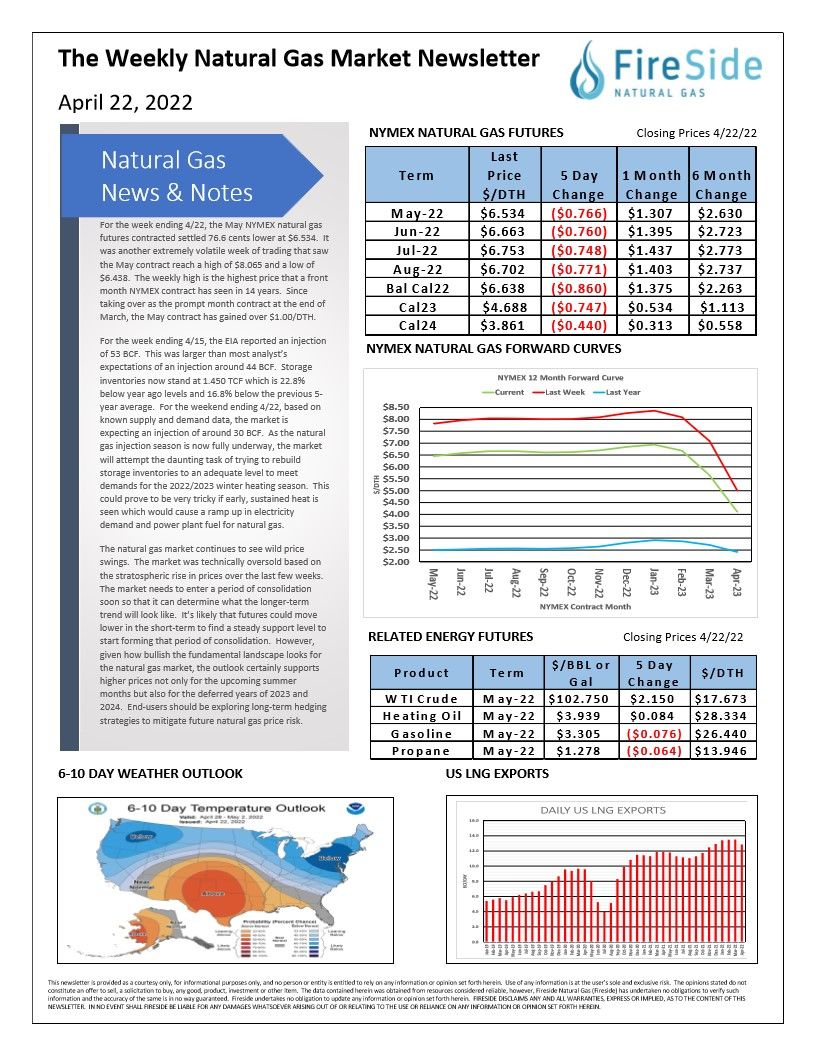The Weekly Natural Gas Market Newsletter April 25, 2022
The Weekly Natural Gas Market Newsletter
April 25, 2022
Natural Gas News & Notes
For the week ending 4/22, the May NYMEX natural gas futures contracted settled 76.6 cents lower at $6.534. It was another extremely volatile week of trading that saw the May contract reach a high of $8.065 and a low of $6.438. The weekly high is the highest price that a front month NYMEX contract has seen in 14 years. Since taking over as the prompt month contract at the end of March, the May contract has gained over $1.00/DTH.
For the week ending 4/15, the EIA reported an injection of 53 BCF. This was larger than most analyst's expectations of an injection around 44 BCF. Storage inventories now stand at 1.450 TCF which is 22.8% below year ago levels and 16.8% below the previous 5- year average. For the weekend ending 4/22, based on known supply and demand data, the market is expecting an injection of around 30 BCF. As the natural gas injection season is now fully underway, the market will attempt the daunting task of trying to rebuild storage inventories to an adequate level to meet demands for the 2022/2023 winter heating season. This could prove to be very tricky if early, sustained heat is seen which would cause a ramp up in electricity demand and power plant fuel for natural gas.
The natural gas market continues to see wild price
swings. The market was technically oversold based on
the stratospheric rise in prices over the last few weeks.
The market needs to enter a period of consolidation
soon so that it can determine what the longer-term
trend will look like. It's likely that futures could move
lower in the short-term to find a steady support level to
start forming that period of consolidation. However,
given how bullish the fundamental landscape looks for
the natural gas market, the outlook certainly supports
higher prices not only for the upcoming summer
months but also for the deferred years of 2023 and
2024. End-users should be exploring long-term hedging
strategies to mitigate future natural gas price risk.


